SPUR Talk: Protected Bike Lanes on the Embarcadero
4:05 PM PST on February 19, 2020
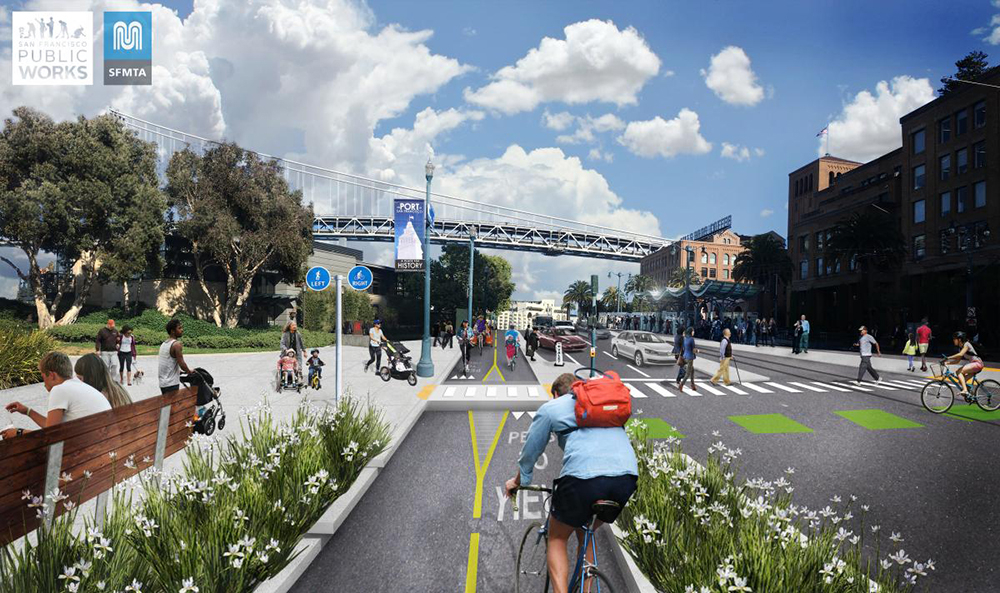
A rendering of the two-way bike lane planned for the Embarcadero. This has been the plan for many years now. Will this finally be realized? Image: SFMTA
Note: GJEL Accident Attorneys regularly sponsors coverage on Streetsblog San Francisco and Streetsblog California. Unless noted in the story, GJEL Accident Attorneys is not consulted for the content or editorial direction of the sponsored content.
The Embarcadero is San Francisco's iconic waterfront street. It's also a three-mile conflict zone that pits maritime, transportation, and leisure uses against each other, explained Dan Hodapp, with the Port of San Francisco. "The goal is for safety in all three roles," he added at a SPUR talk this afternoon about the ongoing "Embarcadero Enhancement Project," which will ultimately bring a two-way protected bike path to the street.
As Streetsblog readers are well aware, safety--especially for vulnerable road users--has failed for the Embarcadero. "It's on our high-injury network, the 13 percent of streets with 75 percent of our crashes," explained Walk San Francisco's Jodie Medeiros. "From 2014 to 2018, we’ve seen about 200 serious crashes on the waterfront.... We’ve also had a couple of fatalities."
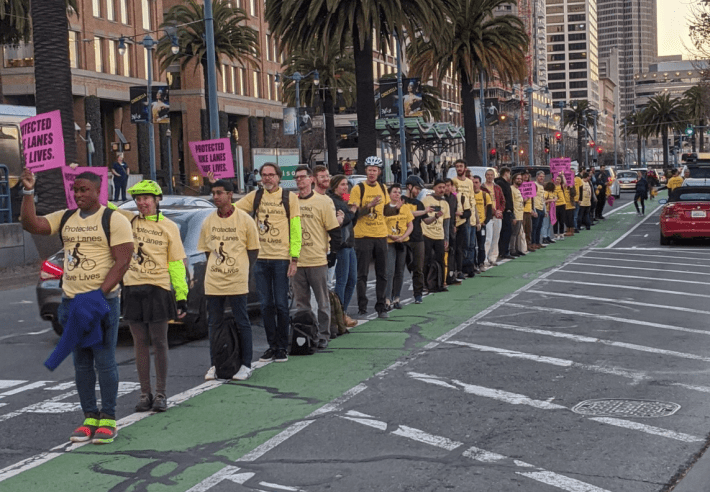
Pressure is mounting to do something about that (as seen in the above photo) and the SFMTA, which is charged with keeping the Embarcadero's streets safe, has been developing a plan to add a two-way protected bike lane, said Casey Hildreth with the SFMTA.
Hildreth explained that in general seniors represent a disproportionate number of those hurt and killed on city streets. But on the Embarcadero, it's cyclists. As pressure grows to change that situation, the city is finally looking at applying its 'quick build' strategy--used successfully in SoMa--to the Embarcadero.
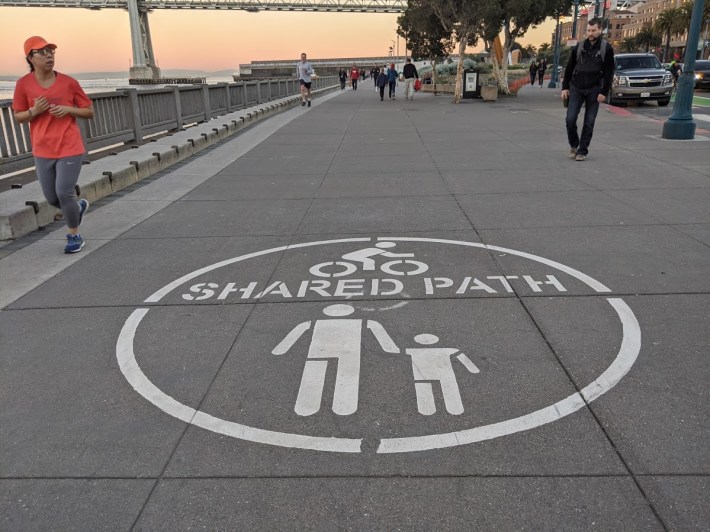
He added that they are planning to build a protected bike lane, at least from Folsom to the ferry building, with plastic posts and paint, which are relatively cheap and easy to install. He said the question for the city is "what can we do now with the tools that we have?"
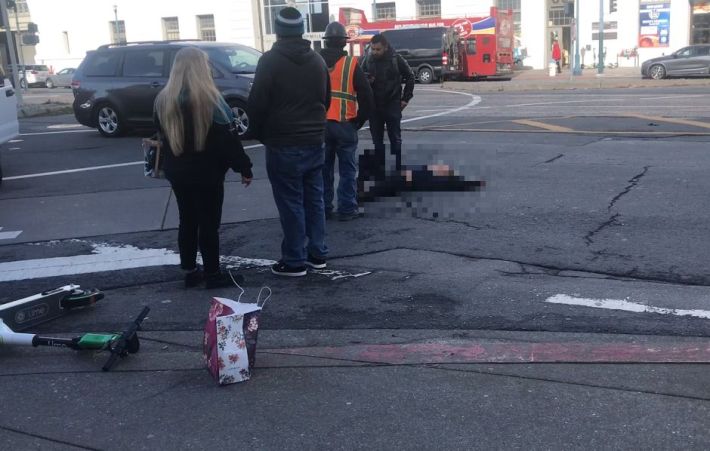
"There are a vastly growing number of users on our ferry system," he added. "So we thought the last few blocks between the ferry terminal to Howard and Folsom seemed like a great opportunity to kick off the quick-build strategy.... We think we can delivery it expediently this year, in 2020. The two blocks are achievable."
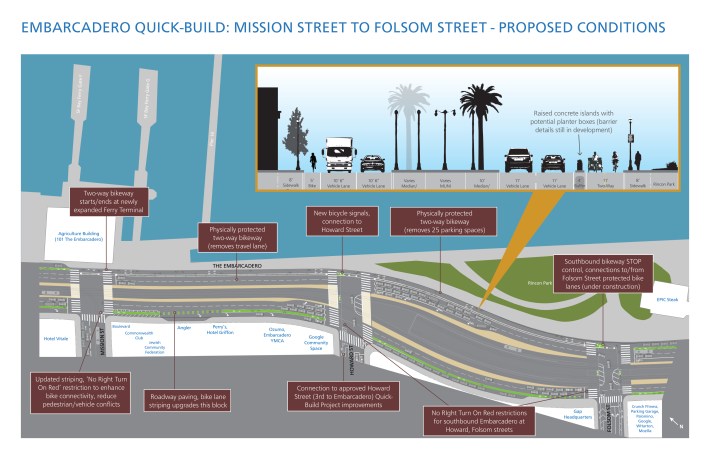
The idea, he said, is to get this quick-build connection in place, and then expand what they learn along the entire length of the Embarcadero. Geoff Rubendall, a consultant with Fehr & Peers who is also working on the project, said they are looking at what works and doesn't work on two-way cycle tracks in other cities, such as Seattle, or even right across the Bay along Lake Merritt in Oakland. Protected intersections and other treatments that bend the cycle path away from potential conflicts will be tried, he said.
Whatever design is ultimately used (the lead image is the rendering that the SFMTA has been using for at least four years), Walk SF's Medeiros wants to make sure people in wheelchairs and with mobility issues will still be able to safely navigate to the waterfront. She talked about her organization's recently released "Getting to the Curb" manual, a guideline for protected bike lane design that maintains safe curb-to-sidewalk access for the elderly and disabled.
The guide recommends, for example, deploying raised crosswalk and a five-foot buffer between the bike lane and the street, to facilitate the movement of those in wheelchairs. "This is just one example of what we’ll be looking at in creating the separated bikeway on the Embarcedero," she said.
Hildreth and Hodapp, meanwhile, cautioned that whatever is built, it has to be balanced against the needs of maritime and other waterfront industries. Hodapp gave the example of the huge loading needs at the cruise ship terminal, which, "when they provision a ship, can take 500 pallets." That causes inherent conflicts with cyclists trying to ride past.
Hildreth said they are trying to develop delivery spaces on the water side of the promenade, and asking that deliveries be made before sunrise--although that doesn't work for every industry. "We have 'dark drops’ where they get the keys for a building to do a delivery at 5:30 in the morning. But for things like liquor, that’s illegal, so there are logistical problems," he said.
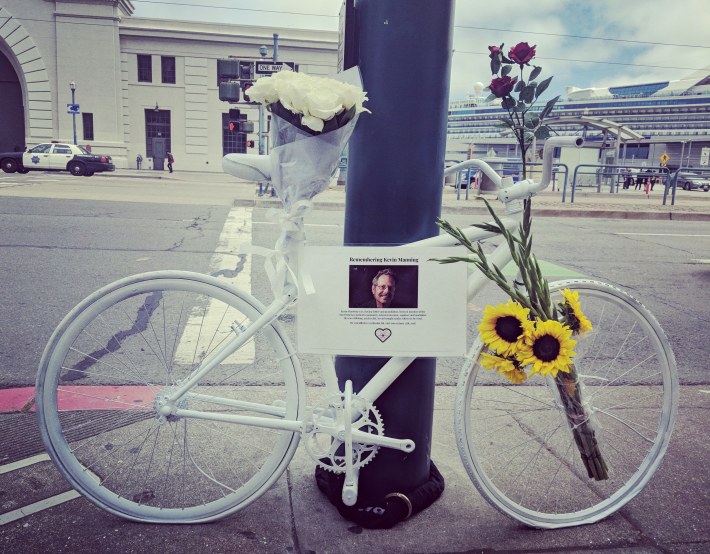
For more events like these, visit SPUR’s events page.
Stay in touch
Sign up for our free newsletter
More from Streetsblog San Francisco
Weekend Roundup: Bancroft Lane Gets Concrete, Party in Downtown S.F.
...and the Bay Bridge to get its lights back
Richmond-San Rafael Bridge Bike Lane Will Need Support
There's no evidence the bike lane contributes to congestion on the bridge
Update on Oakland DOT’s Lakeshore Protected Bike Lane Project
Public seems fairly positive and accepting towards the coming project. Let's hope it stays that way




